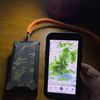A Breath of Fresh Air | Study Reveals Long Beach as the Vacation Hotspot with the Cleanest Air in Washington
 Courtesy of MyBioSource.com
Courtesy of MyBioSource.com
The air quality across the United States has been steadily declining over recent years, signaling a worrying trend for both residents and tourists alike. As per the American Lung Association's 2023 "State of the Air" report, a staggering 137 million Americans were exposed to unhealthy levels of air pollution in 2020, a significant increase from 133 million the previous year.
A more recent source of concern has been the smoke emanating from Canadian wildfires. The smoke has spread far and wide, affecting the northeastern states and even reaching as far as Georgia and Florida. The health implications of such pollution are severe, with respiratory problems, eye irritation, and headaches being some of the most common afflictions.
The prospect of clean, ocean air during summer vacations is a welcoming thought for the millions of Americans living in pollution-impacted areas. A study by MyBioSource has revealed which summer vacation destinations have the cleanest air for vacation-goers.
Analyzing Air Quality Index (AQI) data from the last fortnight*, MyBioSource has comprehensively understood which popular vacation spots in the United States offer the freshest air.
[The Air Quality Index (AQI) is a measure of how polluted the air is and how it affects human health. It is a numerical scale that ranges from 0 to 500, with 0 being the cleanest air and 500 being the most polluted. The AQI is based on six pollutants:
Ozone
Particulate matter (PM2.5 and PM10)
Nitrogen dioxide (NO2)
Sulfur dioxide (SO2)
Carbon monoxide (CO)
Lead (Pb)]
Unsurprisingly, popular vacation destinations in Hawaii and Alaska emerged as oases of fresh air. Hawaii’s Hapuna Beach and Poipu Beach topped the list with an AQI reading of just 10. Close behind were three Alaskan destinations: Homer Spit Beach, Sandy Beach, and Kenai Beach with readings of 11 and 14 respectively.
However, at the other end of the scale were Texas and New York destinations. The bottom was South Padre Island in Texas, beloved for its endless stretches of soft, golden sands and warm Gulf of Mexico waters. However, the average AQI reading stood significantly higher at 57. The Environmental Protection Agency (EPA) has asserted that an AQI between 51 and 100 is acceptable.
With the recent Canadian wildfires, it's perhaps no surprise that two New York destinations - Coney Island and Rockaway Beach - came in at second and third, clocking AQI readings 56. Maryland’s picturesque Chesapeake Beach, with its tranquil beaches and waterfront activities, rounded came fourth with an AQI reading of 55. And rounding off the top five was North Beach in Maryland, also scoring a reading of 55.
Washington vacation hotspots' air readings were as follows:
Long Beach: average AQI of 16.
Ocean Shores: average AQI of 17.
Rialto Beach: average AQI of 18.
Ruby Beach: average AQI of 22.
Westport: average AQI of 32.
Golden Gates Park: average AQI of 32.
For more information, visit https://www.mybiosource.com/summer-vacation-air-quality-index
Please support The OutdoorsNW by subscribing today!
You may also like:






.png)
 Loading...
Loading...
.png)